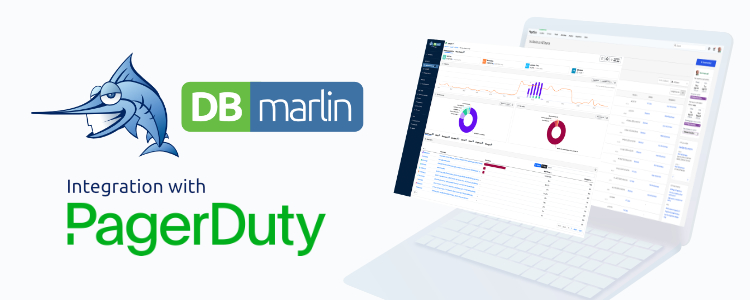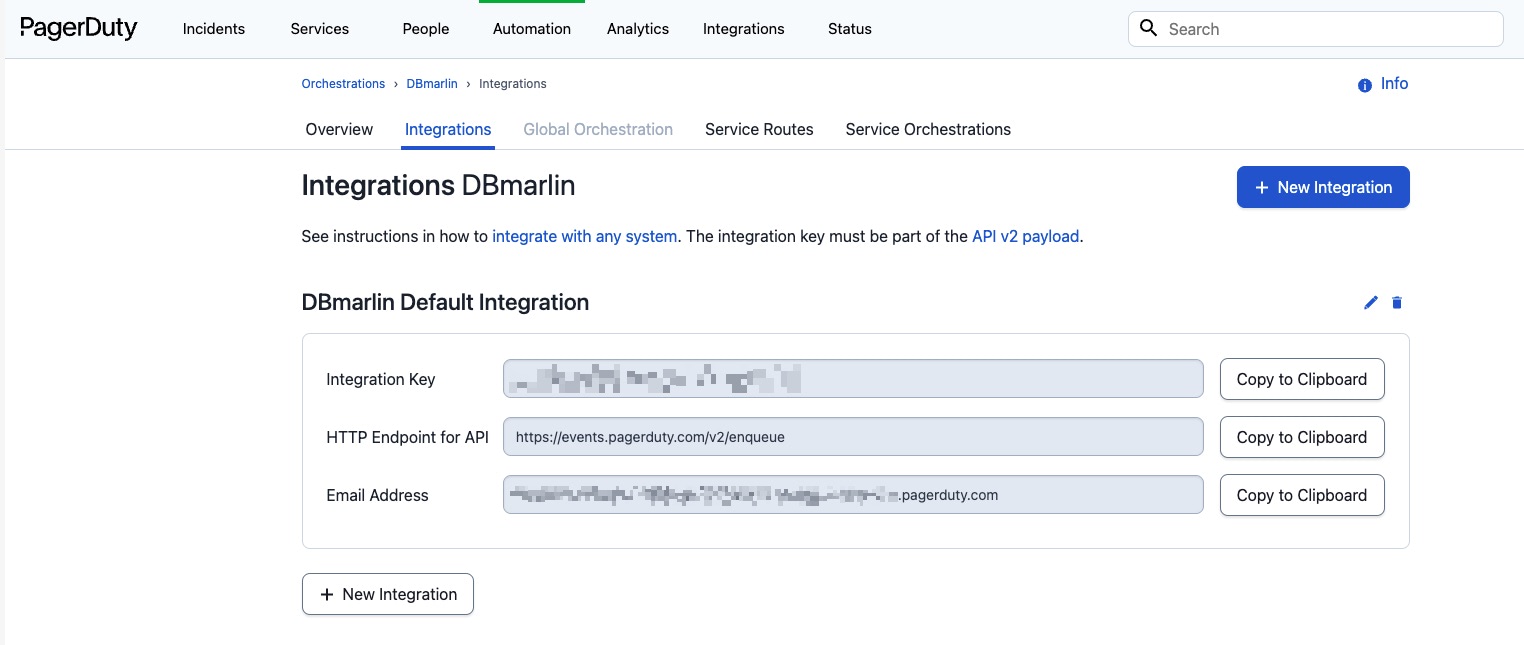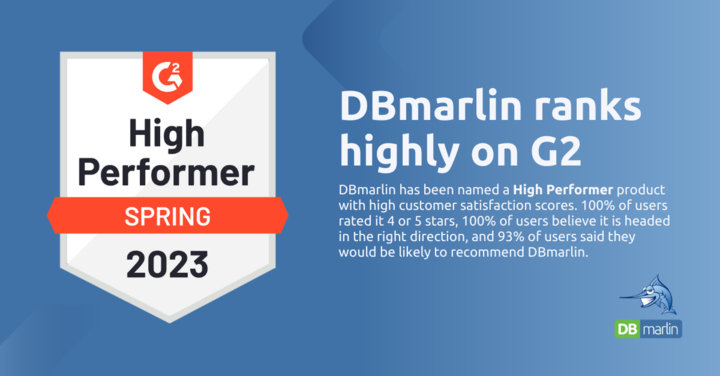Why we integrated DBmarlin with PagerDuty

In version 3.7 of DBmarlin we added an integration with PagerDuty so that alerts raised by DBmarlin can be forwarded to PagerDuty. In this article we will take a look at why we built it, what it does and how you can configure it.
About PagerDuty
PagerDuty is a cloud-based platform that provides digital operations management solutions for businesses and organisations. It is primarily used for incident response, monitoring, and alerting.
PagerDuty is commonly used by IT operations, DevOps teams, and other teams responsible for ensuring the availability and reliability of digital services. It plays a crucial role in improving incident response times, minimising downtime, and enhancing overall operational efficiency within organisations.
Why we built this integration
PagerDuty is a market leader when it comes to incident response and the product is used by thousands of customers around the globe. They already have hundreds of integrations with other solutions including many monitoring tools.
Several DBmarlin customers had asked us about linking DBmarlin alerts with PagerDuty, which made perfect sense. DBmarlin already had the option to send alert notifications by email but emails aren’t the perfect solution to incident management as anyone who has ever been bombarded by hundreds of alert emails will tell you.
Here are some of the benefits of using PagerDuty instead to manage incidents and events:
- It is aware of the on-call schedules for your staff which ensures that the right individuals are notified when incidents occur, and it helps distribute the responsibility for handling incidents among team members.
- When an issue occurs, it can send notifications through multiple channels, including SMS, email, voice calls, and mobile app alerts, to ensure that the appropriate response is initiated promptly.
- It enables you to define escalation policies, which specify how alerts should be routed and escalated if they are not acknowledged or resolved within a certain timeframe.
- As well as notifications, it has event orchestration capabilities which can automatically deduplicate or suppress alerts, and automation actions to further diagnose or remediate problems.
- Its reporting and analytics features help teams track incident response times, measure performance, and identify areas for improvement.
How do you configure it?
First of all what you need from the PagerDuty side is your Integration Key and HTTP API EndPoint for the V2 Event API. There are a few different ways of doing it but we normally recommend using ‘Event Orchestration’ if you have that option, so that events can be mapped to services.
Once you have those 2 pieces of information, you simply need to add them to DBmarlin under Settings → Integrations → PagerDuty.
See the full documentation here: https://docs.dbmarlin.com/docs/integrations/pagerduty/

Video walkthrough
Ready to try DBmarlin?
If you are looking for modern database observability solution that fits with new ways of working and can integrate with your CI/CD pipelines then take a look at DBmarlin:
- Get hands-on without an installation at play.dbmarlin.com
- Download DBmarlin from www.dbmarlin.com, with one FREE standard edition license, which is free forever for 1 target database.
- Join our new community at https://community.dbmarlin.com/invitation?code=74020A

